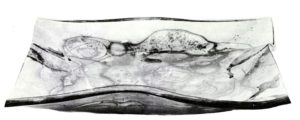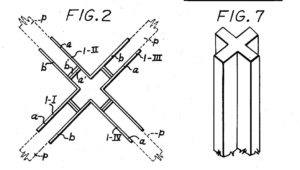International Design during the Cold War Era
EMERGING SCHOLARS > SUMMER RESEARCH GRANTS
Danielle Charlap,
Department of Art History, University of Southern California
In 1963, Dr. Nathan H. Shapira began a 40-year career as a professor at the University of Southern California’s Department of Design. Born in Romania and trained as an architect at the Politecnico di Milano, Shapira shifted his focus to industrial and interior design prior to settling in the United States. Over the course of his career, he would teach generations of students about social design, with a particular focus on design for development.
He was not alone in his interests. Against the backdrop of Cold War politics, the U.S. government created initiatives in the 1950s dedicated to international design training. Renowned designers like Russel Wright were sent abroad under governmental auspices to educate countries on industrialization and American design techniques. As architectural historian Greg Castillo deftly explains in his 2010 book, Cold War on the Home Front: The Soft Power of Midcentury Design, the U.S. government identified the realm of domestic design as a powerful arena for political persuasion. Whether through design exhibitions or industrial-design training courses, these U.S. government programs helped align international economies with Western capitalist priorities.
Shapira served as an instructor in a joint Israel-U.S. initiative called the Israel Institute of Industrial Design at Haifa’s Technion University. The program began in 1951, and was formalized in 1955 as an official U.S. International Cooperation Administration project. After finishing a year as a Commonwealth Fellow at both the Massachusetts Institute of Technology and Harvard University in 1956, Shapira arrived in Israel to teach at the Institute, where his duties extended beyond the classroom, as exemplified by his assignment to curate an exhibition entitled Forms from Israel.
Forms from Israel opened at the Baltimore Museum of Art on December 6, 1958, before traveling to an additional sixteen institutions over the course of the following two years, including the Detroit Institute of Arts and the Museum of Contemporary Craft in New York City. Curated by Shapira, as a representative of the Israel Institute of Industrial Design, the exhibition was sponsored by the American Federation of the Arts (AFA). The show included over 250 objects of utilitarian nature, made out of glass, earthenware, wood, copper, wool, and other materials. Marking the tenth anniversary of Israel’s formation, the exhibit visualized Israel’s efforts to establish itself as a center for modern design and craft.
Forms from Israel pointedly focused on the newest Israeli designs. The objects from Israel’s Bezalel School (originally founded in 1906 in the spirit of the Arts and Crafts Movement) reflect this prioritization (Figure 1). Instead of the detailed filigree work that might have represented the school’s early history, Shapira chose to include sleek, minimalist forms. These resembled the contemporaneous Judaica produced at the Jewish Museum’s Tobe Pascher Workshop in New York City (Figure 2). The stripped-down aesthetic reflected efforts to modernize Judaica and keep in step with design trends of the period. Moreover, Shapira’s inclusion of new materials like Plexiglas alluded to the exhibition’s futurist aspirations (Figure 3).
To this end, Shapira designed a display system to reflect Israel’s rapid development. He patented a joint that combined posts and panels to hold the exhibition’s wooden walls and display tables afloat (Figure 4). “There is no attempt to conceal the connecting joints or to paint the natural wood enclosing the panels,” one press release explains, because “the construction itself sets the atmosphere for new forms in a new country.” This description portrayed Shapira’s design in metaphorical terms, as part of an effort to position Israel as a work in progress. He thereby framed the exhibition as a nationalistic project, one that simultaneously materialized U.S. efforts to shape world politics through the design of everyday life.




